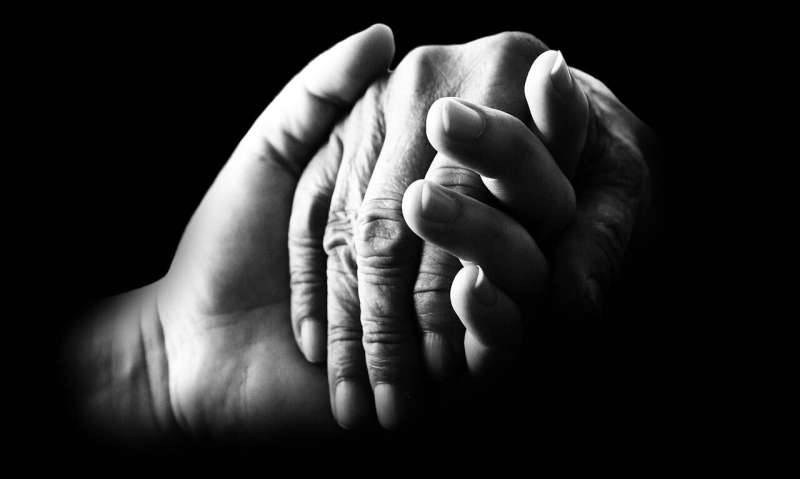This article has been reviewed according to Science X's editorial process and policies. Editors have highlighted the following attributes while ensuring the content's credibility:
fact-checked
trusted source
proofread
New research shows how empathy can be socially transmitted

Prof. Dr. Grit Hein's latest assessments of empathic abilities once again challenge the old adage, "You can't teach an old dog new tricks." It seems that not only children but also adults can adopt empathic responses from close caregivers in addition to their genetic predispositions. Adults, too, are malleable and can learn to be more or less compassionate through observing others.
The professor of Translational Social Neuroscience at the Center of Mental Health of the University Hospital Würzburg (UKW) has managed to capture this complex social phenomenon through mathematical models, a procedure known as Computational Modeling, and has plastically mapped it in the adult brain using functional Magnetic Resonance Imaging (fMRI).
Her findings, published in the Proceedings of the National Academy of Sciences, provide a computational and neuronal mechanism for the social transmission of empathy, explaining changes in individual empathic responses within both empathic and non-empathic social environments. Grit Hein has, in a sense, formalized the process by which empathy is transmitted.
Social transmission of empathy was tested in various studies. The central question of Hein's research was whether empathy, or lack thereof, for another person's pain, is socially transmitted. In a total of four studies, participants first watched videos of hands receiving painful stimulation and indicated their own feelings during this experience on a rating scale.
After providing their own rating, they were shown the empathic or non-empathic responses of other individuals to the same videos. Finally, participants rated their empathy again, this time regarding the pain of a new person. With this experimental setup, Grit Hein and her team were able to test how and if a person's empathy changes in the presence of empathic and non-empathic peers.
Transmission of empathy relies on observational reinforcement learning
By observing the empathic reactions of others, participants learned to be more or less empathetic. "Empathy ratings increased or decreased depending on whether empathic or non-empathic reactions were observed. Interestingly, the neuronal response to the pain of another person also changed," says Grit Hein.
The neural changes measured in the fMRI scanner were reflected in altered connectivity of the anterior insula, a brain region associated with empathy processing. Hein and her team's research demonstrates that these neural changes can be explained by mathematical learning models. This implies that increased or decreased empathy is genuinely induced through learning from others and is not merely an imitation or displayed for the purpose of pleasing others.
Investing in an empathetic environment is worthwhile in a professional context. Does this mean that those who wish to have a good team must create a conducive environment? "Absolutely," responds Grit Hein. "It is essential to understand that adults can learn or unlearn empathy through observation, even from individuals they do not know."
Consequently, those who create a work environment lacking in empathy for reasons of cost-saving, time constraints, or mismanagement must be aware that such behavior shapes employees in the long term and, in turn, affects their interactions with clients or patients.
Previous studies have shown that positive empathy can transition into prosocial motivation, increasing cooperation and willingness to help. However, excessive empathy can also lead down a different path, inducing stress and potentially resulting in burnout or complete withdrawal. Additionally, empathy can be perceived as demanding.
'Respect is the soil for empathy'
"The good news from our studies is that we have the means to shape empathetic ability in adults through appropriate measures in both directions," says Grit Hein. "It is possible to learn positive empathy from others. However, for empathy to thrive long-term, it requires an atmosphere of mutual respect. One can respect someone without having empathy for that person, but it is challenging to develop empathy if the other person is not respected as a human or if disrespect is accepted in society."
The complex social interactions are among the research focuses of Grit Hein. To understand these interactions, it is necessary to start very basically, establish the fundamental mechanisms, and gradually incorporate social factors like puzzle pieces. For this reason, the current study was conducted exclusively with women.
However, the social empathy transmission effect was replicated in different environments (MRI and laboratory) and with female participants of various ages and ethnicities. Both younger and older European and Asian participants responded similarly.
Subsequent studies on empathy that include mixed genders represent an appealing approach. At the moment, Grit Hein is further examining whether the model can also be applied to other social behaviors, such as selfishness or aggression.
More information: Yuqing Zhou et al, The social transmission of empathy relies on observational reinforcement learning, Proceedings of the National Academy of Sciences (2024). DOI: 10.1073/pnas.2313073121


















